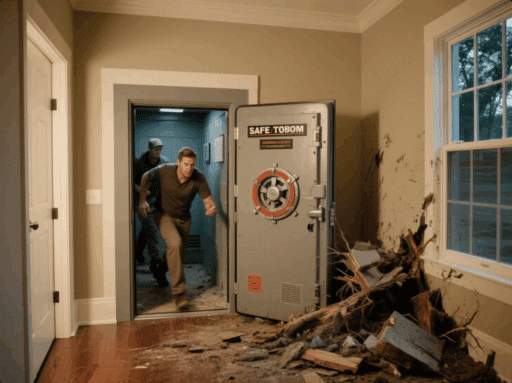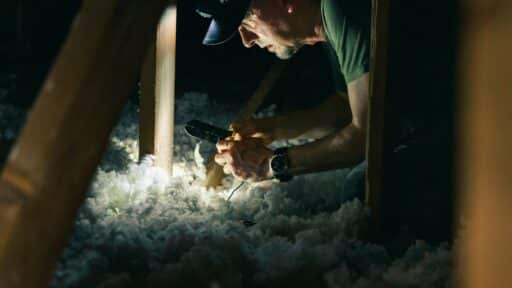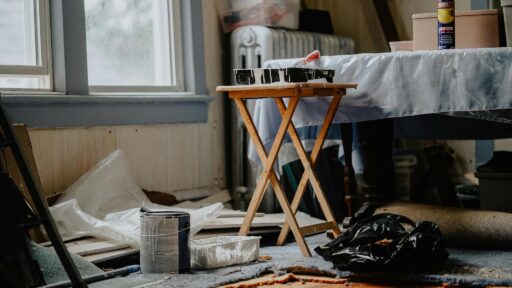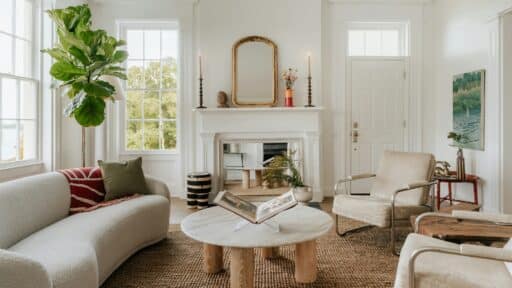The increased global warming has led to climate change. Hurricanes and tornadoes are no longer unusual occurrences. They are becoming frequent and powerful with time. Recently, at least 32 people died as tornadoes swept through parts of the US. On top of this, 185,000 households and businesses were left without electricity in the wake of these disasters.[1] Therefore, having a safe room in the house is a must. It shields you from the dangers of natural disasters, keeping panic and worry away. Let’s discuss more about a safe room and how Jackery solar generators help in these situations!
What Is a Safe Room?
A safe room is a specially designed space within your home that acts as a secure refuge during emergencies. For instance, if there’s an invasion or a natural disaster, you can rush to the safe room to get shelter. The goal is to stay protected and buy enough time until help arrives or the threat goes away.
Typically, a safe room in the house is impenetrable. It’s made of durable materials, including reinforced steel, concrete, or ballistic fiberglass. Thus, it can easily withstand strong force, gunfire, and even extreme weather without shaking.
Why Does Every US Homeowner Need a Safe Room?
Well, just like other parts of the world, the US is pretty much affected by climate change. In addition, there are also several cases of theft, which makes a safe room in the house a necessity. Here’s an explanation of a few reasons:
Protection from Severe Weather
If we give you a recap of the past year in the US, there have been multiple instances of severe weather. For instance, by the end of May 2024, there were 1,032 tornadoes. This huge number was partly due to Hurricane Beryl, which produced 68 tornadoes.[2] These caused deaths as well as structural damage. However, one of the major reasons to invest in a safe room in a house in the US is protection from severe weather. You and your loved ones can seek shelter in the safe room as the severe weather hits your area. This keeps you away from the destructive and scary forces of nature and also eliminates panic.
Enhanced Home Security
Despite the overall decline in crime rates, home burglary remains a concern for US homeowners. Statistics paint a stark picture: a home burglary occurs approximately every 15 seconds in the United States.[3]
A safe room in the house addresses this concern by enhancing home security. How? Well, when there’s a break-in, you can quickly take your family and a few valuables and run to the safe room.
Since safe rooms have reinforced doors and durable locks, intruders can’t get in. You and your family feel safe while you contact the authorities to take the necessary action.
Protection from Hazardous Materials
In case there’s an accidental chemical spill in your area or release of toxic fumes, you don’t have to die a slow death. Instead, you can invest in a safe room in the house and stay there for a few days.
You can take a few days’ worth of meals and other essentials in the safe room. It acts as your retreat until the outdoor environment becomes safe enough to leave.
Protects Valuable Possessions
Another reason US homeowners should have a safe room in the house is to protect valuable possessions. For instance, you can use it to store your jewelry, expensive art, and other important documents. Intruders and thieves won’t be able to get away with your valuables, saving you from the loss of hundreds of thousands of dollars.
How to Design a Safe Room?
Designing a safe room in the house isn’t a one-step process but involves multiple key decisions. These range from choosing the right location to identifying threats and getting the right construction. Let’s discuss everything in detail:
Identify Threats and Needs
Firstly, you need to identify the threats and needs your safe roof should address.
- Determine Primary Risk: Do you live in an area with a high theft ratio and want a safe room to protect your valuables? Or are there frequent natural disasters, and you need a safe haven for a few days for yourself and your loved ones? Assessing the primary risk will help you design a safe room in the house that can serve the desired purpose.
- Assess Occupancy: How many people are expected to stay in the safe room? Is it only going to be you or your family and pets, too? Having this information beforehand affects the overall bedding, ventilation, and other necessary amenities inside the room.
- Determine the Duration of Stay: How long will the stay be? For short-term stays, basic seating and communication devices will suffice. However, for long-term stays, you should have a power source, food items, and some emotional support (games and books).
Choose the Location
The whole purpose of the safe room in the house is to protect you and your belongings. So, be very mindful of its location. It should be accessible during emergencies and remain hidden from intruders. Some spots that you can explore include:
- Interior Room: Interior rooms with no exterior walls are generally considered safe. They are more accessible and less vulnerable to damage from flying debris or impact from external forces. Most importantly, these are quite hidden and hard for thieves to reach.
- Basement: Basements prove to be ideal during natural disasters like hurricanes and tornadoes. It’s naturally shielded from the earth, and you and your loved ones can stay there for days without stressing about the outdoor situation.
- Above Ground: If your home doesn’t have a basement, you can build a safe room on the upper or main floor. It’ll be accessible to people of all ages, including children and the elderly. In case of a home invasion, you can quickly get shelter in such safe rooms.
Design and Construction Considerations
Design your safe room in the house in such a way that it can withstand immense force and even firearms. Here are some things that you should consider:
- Structural Reinforcement: The ceilings, foundation, and walls of the safe room are the primary structural elements. It can be made from reinforced concrete and steel, as both materials are durable and can bear high winds and debris.
- Door: For safe rooms, you should consider vault or heavy-duty security doors. They are often made of steel and feature ½ ½-inch thickness for enhanced safety. Bullet, and fire resistance is some additional features you should look into when choosing doors.
- Windows: Most safe rooms, especially those in basements, don’t have windows. However, if you want some in your safe room in the house, you can opt for options like ballistic and blast windows.
- Ventilation: Chances are that the windows in safe rooms are inoperable, so there’ll be no natural ventilation. However, you should install other systems like fans, air filtration units, and dehumidifiers to keep fresh air circulating.
- Communication: It’s important to have proper communication devices in your safe rooms. This ensures you stay in touch with the outside world and contact relevant authorities in case of an emergency. Some common ones include a landline phone with a secure line, a two-way radio, and a direct alarm connection to law enforcement.
- Power Backup: During natural disasters, power can go out for days and even weeks. It’s a must to have a reliable backup power source.
Jackery Solar Generator 5000 Plus
The Jackery Solar Generator 5000 Plus is an incredible power station that boasts a massive 5- 60 kWh capacity and 7200-14400 W output.
Whether a hurricane has hit your area or a storm awaits, this solar generator keeps all your appliances running uninterruptedly. It has 12 output ports that allow you to connect multiple devices to it simultaneously.
What’s truly impressive is its ZeroDrain technology, which retains 96.8% of its power after three months. After one year, it still has 92.5% of its power remaining. Therefore, it can guarantee power during outages caused by storms, high temperatures, or earthquakes and ensure readiness during emergencies. It’s also quite portable, weighing around 132 lbs, so you can carry it to the safe room without any hassle.
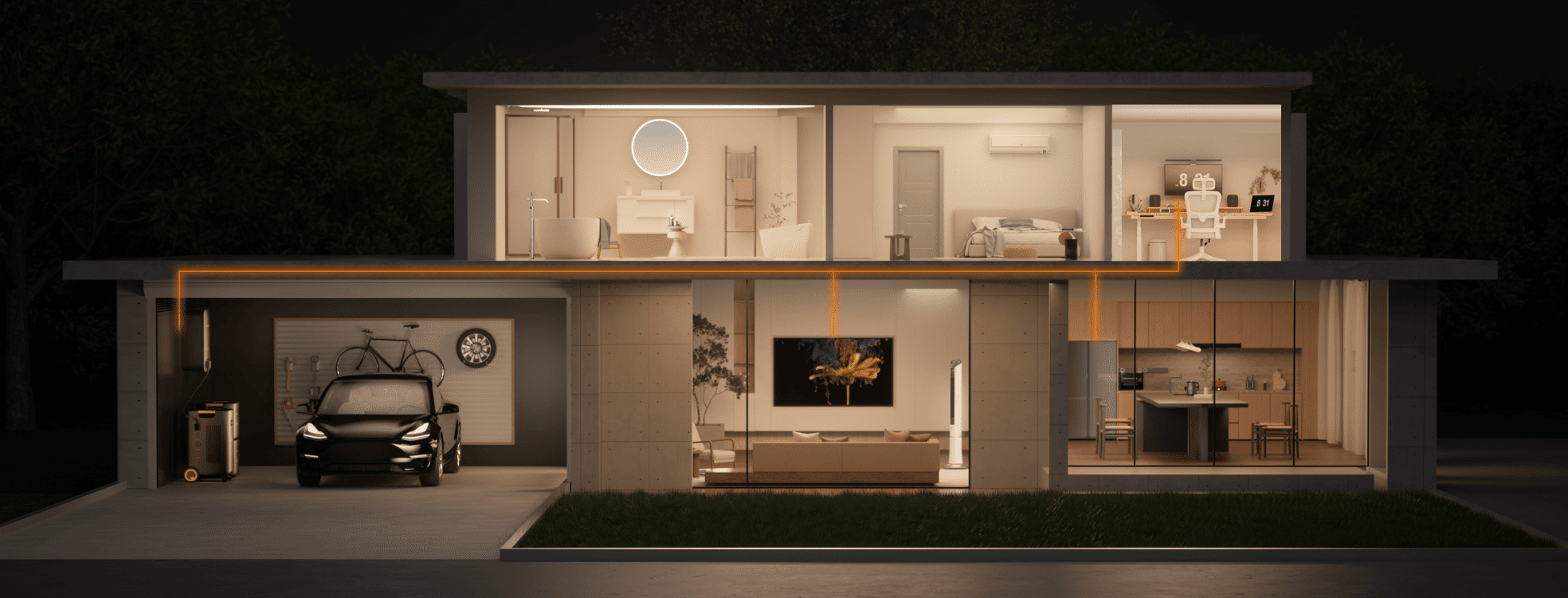
- Emergency Supplies: The emergency supplies that you should have in your safe room include food and water that last for 72 hours. In addition, you must have a first aid kit carrying painkillers, bandages, and antiseptic wipes. Lighting and personal hygiene items are also part of the list.
- Security Features: You should have security features in the panic room, including alarm systems, panic buttons, surveillance cameras, and motion detectors.
- Concealment: It’s an optional thing, but it’s suitable if you do it. You can conceal your safe room by merging it with the surrounding environment. For instance, the doors of these rooms can appear as bookshelves or cabinets, enhancing the overall ambiance of your home.
Building Codes and Standards
- FEMA Guidelines: The Federal Emergency Management Agency (FEMA) has detailed guidelines, such as FEMA P-361. They tell you about the design and construction of safe rooms.
- ICC 500: ICC 500 or International Code Council (ICC) 500, just like FEMA, informs about the design and construction of safe rooms, along with testing standards such as those for missile impact and wind pressure resistance.
- Local Building Codes: There might be some local regulations regarding how to build a safe room in an existing home. It’s essential to consult your local government before proceeding with the construction to avoid legal penalties.
Is a Safe Room Worth It?
Many people ask if a safe room is worth it. How much does it cost? So, let’s find out!
Average Costs
Well, the construction of a high-end panic room starts from $50,000 and can reach beyond 500,000.[4] However, it varies depending on the size, material choices, and the amenities that you plan to add to the safe room in the house.
FEMA Grants
FEMA covers the safe room in house cost through various funding opportunities. It’s offered through the Hazard Mitigation Grant Program (HMGP) or the Pre-Disaster Mitigation Program (PDM). It typically covers 75% of the eligible cost of each project.[5] The support doesn’t always have to be in cash; it can be in-kind services or materials.
Long-Term Savings
Although the upfront cost of a safe room in the house is high, it offers significant cost savings in the long run. For instance:
- Some insurers offer reduced premiums for homes with FEMA-compliant safe rooms.
- Homes with safe rooms have high resale value, offering incredible return on investment.
Is a Safe Room Worth It?
Many people ask if a safe room is worth it. How much does it cost? So, let’s find out!
Average Costs
Well, the construction of a high-end panic room starts from $50,000 and can reach beyond 500,000.[4] However, it varies depending on the size, material choices, and the amenities that you plan to add to the safe room in the house.
FEMA Grants
FEMA covers the safe room in house cost through various funding opportunities. It’s offered through the Hazard Mitigation Grant Program (HMGP) or the Pre-Disaster Mitigation Program (PDM). It typically covers 75% of the eligible cost of each project.[5] The support doesn’t always have to be in cash; it can be in-kind services or materials.
Long-Term Savings
Although the upfront cost of a safe room in the house is high, it offers significant cost savings in the long run. For instance:
- Some insurers offer reduced premiums for homes with FEMA-compliant safe rooms.
- Homes with safe rooms have high resale value, offering incredible return on investment.

Common Mistakes to Avoid When Building a Safe Room
To make sure you don’t end up investing in the wrong place or safe room, here are some common mistakes that you must avoid:
Poor Location Choices
Having a safe room in the wrong location can compromise both safety and accessibility. For example, a room that’s far away can become hard to reach in an emergency situation. Or if it’s exposed to everyone and not hidden, it is vulnerable to damage and intrusion.
Overlooking Ventilation or Emergency Exits
Well, indeed, the safe room in the house should keep you protected. However, it shouldn’t be suffocating. Many homeowners don’t realize the difference and end up making a safe room that’s airtight without any air circulation systems or windows. You shouldn’t repeat the same mistake and include air vents in the safe room to maintain comfort.
Skipping Professional Inspections
It’s a good idea to take on DIY safe room projects, but relying on mere intuition is where you might go wrong. So, after installing everything, you must hire a licensed professional to double-check the reinforcements. They will thoroughly inspect your structure and make sure there are no errors and that it meets FEMA or ICC 500 standards.
Underestimating Power Needs
Many people think they don’t need power during their stay in the safe room, and that’s a huge mistake. No backup power leaves you without communication tools and in the dark for hours and sometimes days. This can create panic and stress. So, always have a solar generator or power station in the safe room and use it to power essential electronics.
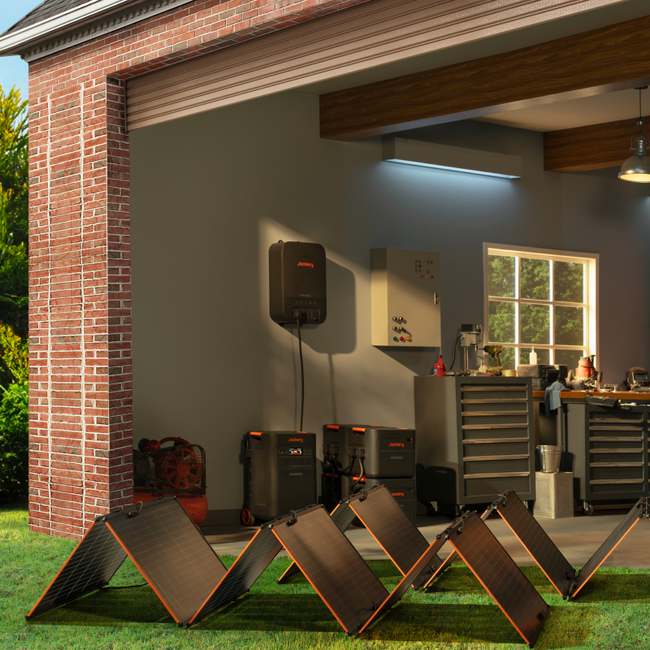
Conclusion
Having a tornado-safe room in the house gives you much-needed peace of mind as your loved ones and belongings stay safe. If you want a reliable power source for the safe room, trust Jackery! Visit their site today to explore the massive range of solar products and get the mighty Jackery Solar Generator 5000 Plus right away!
References
- At least 32 dead as tornadoes sweep through parts of US. Available at: https://www.aljazeera.com/news/2025/3/15/deadly-storms-kill-at-least-17-across-three-us-states (Accessed: May 22, 2025)
- 2024 Tornado Activity Reached Near-Historic Levels Across the U.S. Available at: https://www.weather.gov/news/250703_tornado_activity#:~:text=By%20the%20end%20of%20May,in%20first%20with%201%2C237%20tornadoes.&text=Severe%20weather%20remained%20active%20in,Beryl%2C%20which%20produced%2068%20tornadoes. (Accessed: May 22, 2025)
- Home burglary statistics and cost. Available at: https://www.nationwide.com/lc/resources/home/articles/home-burglary#:~:text=A%20home%20burglary%20occurs%20approximately,dollar%20loss%20of%20about%20%241%2C600. (Accessed: May 22, 2025)
- Panic Room Costs. Available at: https://home.howstuffworks.com/home-improvement/household-safety/panic-room3.htm (Accessed: May 22, 2025)
- Hazard Mitigation Grant Program Funds. Available at: https://www.fema.gov/emergency-managers/risk-management/building-science/safe-rooms/funding#:~:text=FEMA%20can%20fund%20up%20to,the%20State%20Hazard%20Mitigation%20Officer. (Accessed: May 22, 2025)

